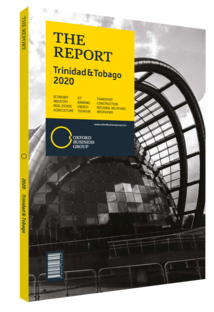Trinidad and Tobago's debt market dominated by government bonds
While Trinidad and Tobago’s primary bond market has seen 59 issuances since 2013, fewer than 15% were private corporate issuances. The government, either directly or through state-owned enterprises, has maintained a dominating presence in the debt market, which it taps to borrow the funds needed for infrastructure development projects and recurrent expenditures such as salary payments.
Diversification Dilemma
The fact that most of the debt is issued by the government poses a dilemma for portfolio managers seeking to diversify pension plans and mutual funds. The Insurance Act requires local funds and pension plans to invest at least 80% of their assets under management in domestic capital markets. Many of the funds are in bonds, and as such the majority of fixed-income assets in portfolios are government-issued debt.
Without corporate players in the market, however, there is a high risk associated with local portfolios. Should the country be downgraded by international credit agencies or the government defaults on its debts, local mutual fund and pension plans would be severely affected. Indeed, the high issuance of the government debt is one of the major contributing factors to T&T’s downgrades by credit agencies, as it is increasing the debt-to-GDP ratio.
Private Issuers
There are several factors that play into corporate entities’ under-representation in the primary debt market. There is the belief that the private sector has enough capital to fund its desired projects, and often it is difficult for firms to provide quality audited accounts to lenders.
Ease of access to bank loans also disincentivises corporations’ participation. It is easier for companies to comply with the stipulations associated with such funding. For example, a bond agreement may stipulate a minimum ratio to protect bond investors of the company’s earnings before interest and tax to its interest expense. Companies already listed on the T&T Stock Exchange can easily issue debt as they would already meet the these requirements.
The issuance of National Investment Fund (NIF) bonds in the summer of 2018, backed by corporations such as Angostura, Republic Bank and WITCO, was oversubscribed by 82%, a clear sign of high investor interest in the corporate debt market. Should companies continue to issue debt, it is expected that there will be more than enough demand for such investments. However, it is important to note that the NIF bonds, while backed by corporate entities, were considered to be a quasi-government bond by many investors.
Yields & Maturity
Government debt has traditionally had a short- to medium-term maturity profile, with a weighted average interest rate of 4% and maturity of 8.5 years. While this might be satisfactory for individual investors or portfolios comprised of proprietary funds, these characteristics put pressure on long-term portfolios such as life insurance funds and pension plans.
The lack of long-term bond issuances and their accompanying high yields make it difficult for these portfolios to fulfil their objective with regard to actuarial targets. For instance, actuaries may posit that pension plans need to earn between 6% and 7% annually in order to fulfil their liability or obligations to the plan’s participants, but the typical yield on domestic bonds average 4%.
Long-term portfolio planning is largely based on theoretical yields, as most local bonds do not have maturities that extend beyond 10 years. As such, it is difficult for portfolios invested primarily in government bonds to yield returns of around 7%. The presence of higher-yielding corporate bonds, or even government bonds with longer maturity profiles, would greatly ease the pressure on funds such as pension plans, which are mandated to tap low-risk, long-term investments to meet their goals.
You have reached the limit of premium articles you can view for free.
Choose from the options below to purchase print or digital editions of our Reports. You can also purchase a website subscription giving you unlimited access to all of our Reports online for 12 months.
If you have already purchased this Report or have a website subscription, please login to continue.

